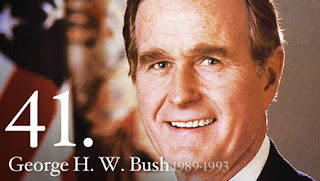
Pennsylvania; Pennsylvania German: Pennsilfaani), officially the Commonwealth of Pennsylvania, is a state spanning the Mid-Atlantic, Northeastern, Appalachian, and Great Lakes regions of the United States. Pennsylvania borders Delaware to its southeast, Maryland to its south, West Virginia to its southwest, Ohio to its west, Lake Erie and the Canadian province of Ontario to its northwest, New York state to its north, and the Delaware River and New Jersey to its east.
Pennsylvania is the fifth-most populous state in the nation with over 13 million residents as of 2020, its highest decennial count ever. The state is the 33rd-largest by area and ranks ninth among all states in population density. The southeastern Delaware Valley metropolitan area comprises and surrounds Philadelphia, the state's largest and nation's sixth-most populous city. Another 2.37 million reside in Greater Pittsburgh in the southwest, centered in and around Pittsburgh, the state's second-largest and Western Pennsylvania's largest city. The state's subsequent five most populous cities are: Allentown, Reading, Erie, Scranton, and Bethlehem. The state capital is Harrisburg.
Indigenous settlement
Pennsylvania's history of human habitation extends to thousands of years before the foundation of the colonial Province of Pennsylvania in 1681. Archaeologists believe the first settlement of the Americas occurred at least 15,000 years ago during the last glacial period, though it is unclear when humans first entered the area now known as Pennsylvania. There also is open debate in the archaeological community regarding when ancestors of Native Americans expanded across the two continents down to the tip of South America; possibilities range between 30,000 and 10,500 years ago. Meadowcroft Rockshelter in Jefferson Township includes the earliest known signs of human activity in Pennsylvania and perhaps all of North America, including the remains of a civilization that existed over 10,000 years ago and possibly pre-dated the Clovis culture. By 1000 CE, in contrast to their nomadic hunter-gatherer ancestors, the native population of Pennsylvania had developed agricultural techniques and a mixed food economy.
By the time European colonization of the Americas began, at least two major Native American tribes inhabited Pennsylvania. The first, the Lenape, spoke an Algonquian language and inhabited the eastern region of the state, then known as Lenapehoking. It included most of New Jersey and most of the Lehigh Valley and Delaware Valley regions of eastern and southeastern Pennsylvania. The Lenape's territory ended somewhere between the Delaware River in the east and the Susquehanna River in central Pennsylvania. The Susquehannock, who spoke an Iroquoian language, were based in more western regions of Pennsylvania from New York in the north to West Virginia in the southwest that included the Susquehanna River all the way to the Allegheny and Monongahela rivers near present day Pittsburgh. European disease and constant warfare with several neighbors and groups of Europeans weakened these tribes, and they were grossly outpaced financially as the Hurons and Iroquois blocked them from proceeding west into Ohio during the Beaver Wars. As they lost numbers and land, they abandoned much of their western territory and moved closer to the Susquehanna River and the Iroquois and Mohawk tribes located more to the north. Northwest of the Allegheny River was the Iroquoian Petun, known mostly for their vast tobacco plantations, although this is believed to be complete fabrication. They were fragmented into three groups during the Beaver Wars: the Petun of New York, the Wyandot of Ohio, and the Tiontatecaga of the Kanawha River in southern West Virginia. South of the Allegheny River was a nation known as Calicua. They may have been the same as the Monongahela culture and little is known about them except that they were probably a Siouan culture. Archaeological sites from this time in this region are scarce.
^Independence Hall in Philadelphia, where the Declaration of Independence and United States Constitution were adopted in 1776 and 1787-88, respectively
If you want to read lots more, go here: https://en.wikipedia.org/wiki/Pennsylvania
- 1 (10-3/4-ounce) can cream of chicken soup
- 1 cup sour cream
- 2 cups shredded Cheddar cheese, divided
- 3/4 teaspoon salt
- 1/2 teaspoon black pepper
- 3 cups cooked chopped chicken (get a cooked rotisserie chicken from the market)
- 2 cups chopped frozen broccoli, thawed (or whatever is your favorite vegetable!)
- 1/4 cup cooked crumbled bacon
- 1 (16.3-ounce) can refrigerated biscuits, each biscuit cut into thirds
- Preheat oven to 375º. Coat a 9- x 13-inch baking dish with cooking spray.
- In a large bowl, combine soup, sour cream, 1-1/2 cups cheese, the salt, and pepper; mix well. Stir in chicken, broccoli, and bacon. Add biscuits and toss until evenly coated. Spoon mixture into baking dish. Sprinkle with remaining cheese.
- Bake 30 to 35 minutes, or until biscuits are golden brown.
It was in the early 1920s began to be listed as an ingredient in cookies.













No comments:
Post a Comment